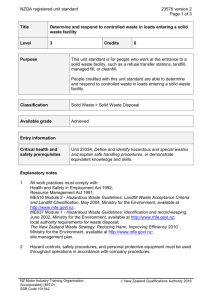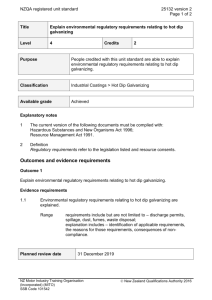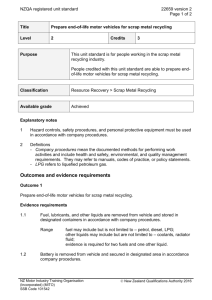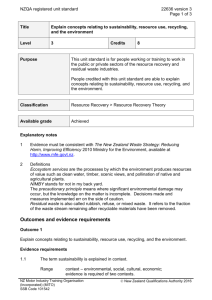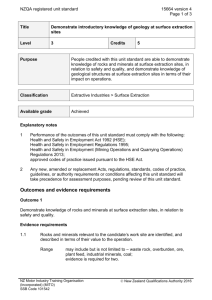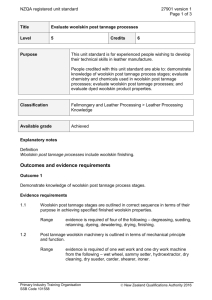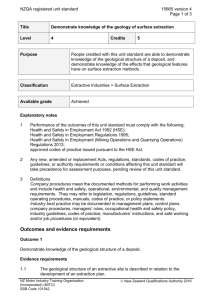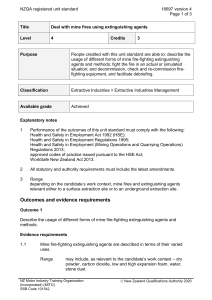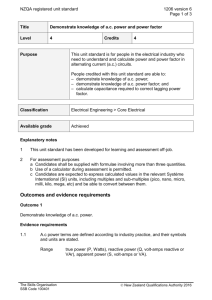3465 Describe driving hazards and crash risk reduction
advertisement
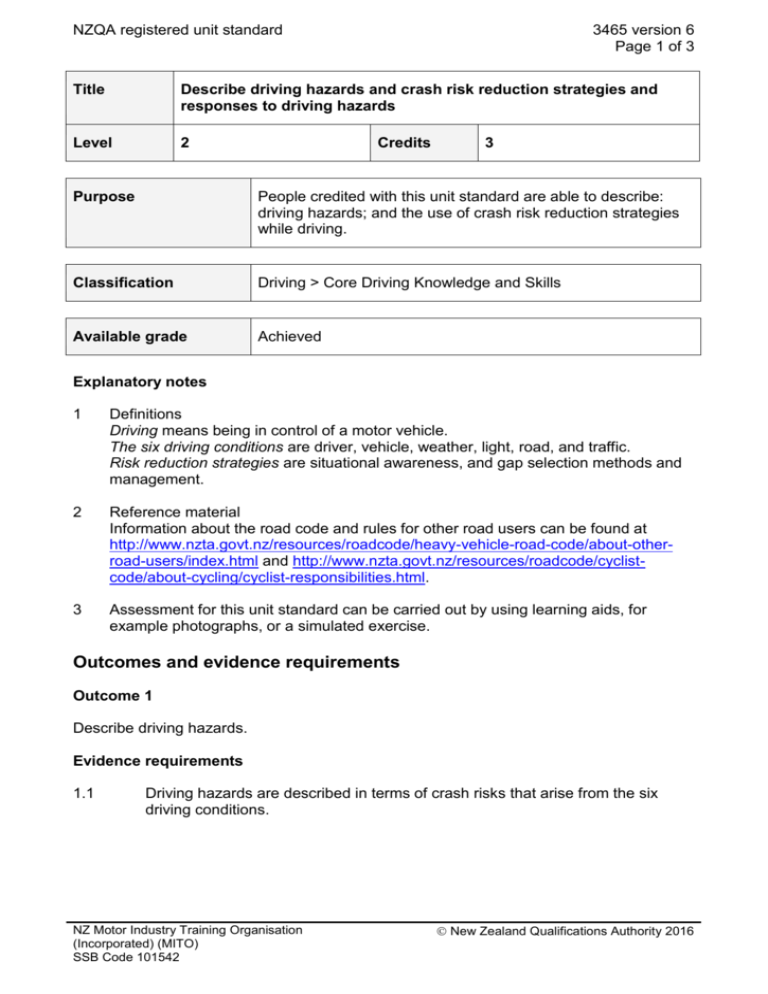
NZQA registered unit standard 3465 version 6 Page 1 of 3 Title Describe driving hazards and crash risk reduction strategies and responses to driving hazards Level 2 Credits 3 Purpose People credited with this unit standard are able to describe: driving hazards; and the use of crash risk reduction strategies while driving. Classification Driving > Core Driving Knowledge and Skills Available grade Achieved Explanatory notes 1 Definitions Driving means being in control of a motor vehicle. The six driving conditions are driver, vehicle, weather, light, road, and traffic. Risk reduction strategies are situational awareness, and gap selection methods and management. 2 Reference material Information about the road code and rules for other road users can be found at http://www.nzta.govt.nz/resources/roadcode/heavy-vehicle-road-code/about-otherroad-users/index.html and http://www.nzta.govt.nz/resources/roadcode/cyclistcode/about-cycling/cyclist-responsibilities.html. 3 Assessment for this unit standard can be carried out by using learning aids, for example photographs, or a simulated exercise. Outcomes and evidence requirements Outcome 1 Describe driving hazards. Evidence requirements 1.1 Driving hazards are described in terms of crash risks that arise from the six driving conditions. NZ Motor Industry Training Organisation (Incorporated) (MITO) SSB Code 101542 New Zealand Qualifications Authority 2016 NZQA registered unit standard 3465 version 6 Page 2 of 3 Outcome 2 Describe the use of crash risk reduction strategies while driving. Evidence requirements 2.1 Techniques for dealing with driving hazards are described in terms of reducing crash risk. includes but is not limited to – observance of traffic regulations, hazard action plan, observation techniques, system of vehicle control. Range 2.2 Driver distractions are identified and described in terms of their effects on driving and crash risk. Range 2.3 three distractions while driving, which may include but are not limited to – fatigue, technology use, external distractions, adjusting vehicle controls, eating or drinking, smoking, talking. Time and space management are described in terms of how they reduce the level of crash risk. Range 2.4 judging speed, judging distance, anticipating the behaviour of other traffic. The road code and rules being observed by other road users are described in terms of how they impact on driving and crash risk. Range other road users must include cyclists and may include pedestrians, tractors or other farm equipment, overdimension vehicles, motorcyclists, horses; must include but is not limited to – passing, following distances, other road users’ understanding of your vehicle and its limitations. Planned review date 31 December 2019 Status information and last date for assessment for superseded versions Process Version Date Last Date for Assessment Registration 1 21 March 1995 31 December 2017 Review 2 29 June 1999 31 December 2017 Revision 3 14 November 2000 31 December 2017 Review 4 22 October 2004 31 December 2017 Review 5 27 October 2006 31 December 2017 Review 6 16 April 2015 N/A NZ Motor Industry Training Organisation (Incorporated) (MITO) SSB Code 101542 New Zealand Qualifications Authority 2016 NZQA registered unit standard 3465 version 6 Page 3 of 3 Consent and Moderation Requirements (CMR) reference 0092 This CMR can be accessed at http://www.nzqa.govt.nz/framework/search/index.do. Please note Providers must be granted consent to assess against standards (accredited) by NZQA, before they can report credits from assessment against unit standards or deliver courses of study leading to that assessment. Industry Training Organisations must be granted consent to assess against standards by NZQA before they can register credits from assessment against unit standards. Providers and Industry Training Organisations, which have been granted consent and which are assessing against unit standards must engage with the moderation system that applies to those standards. Requirements for consent to assess and an outline of the moderation system that applies to this standard are outlined in the Consent and Moderation Requirements (CMR). The CMR also includes useful information about special requirements for organisations wishing to develop education and training programmes, such as minimum qualifications for tutors and assessors, and special resource requirements. Comments on this unit standard Please contact the NZ Motor Industry Training Organisation (Incorporated) (MITO) info@mito.org.nz if you wish to suggest changes to the content of this unit standard. NZ Motor Industry Training Organisation (Incorporated) (MITO) SSB Code 101542 New Zealand Qualifications Authority 2016
